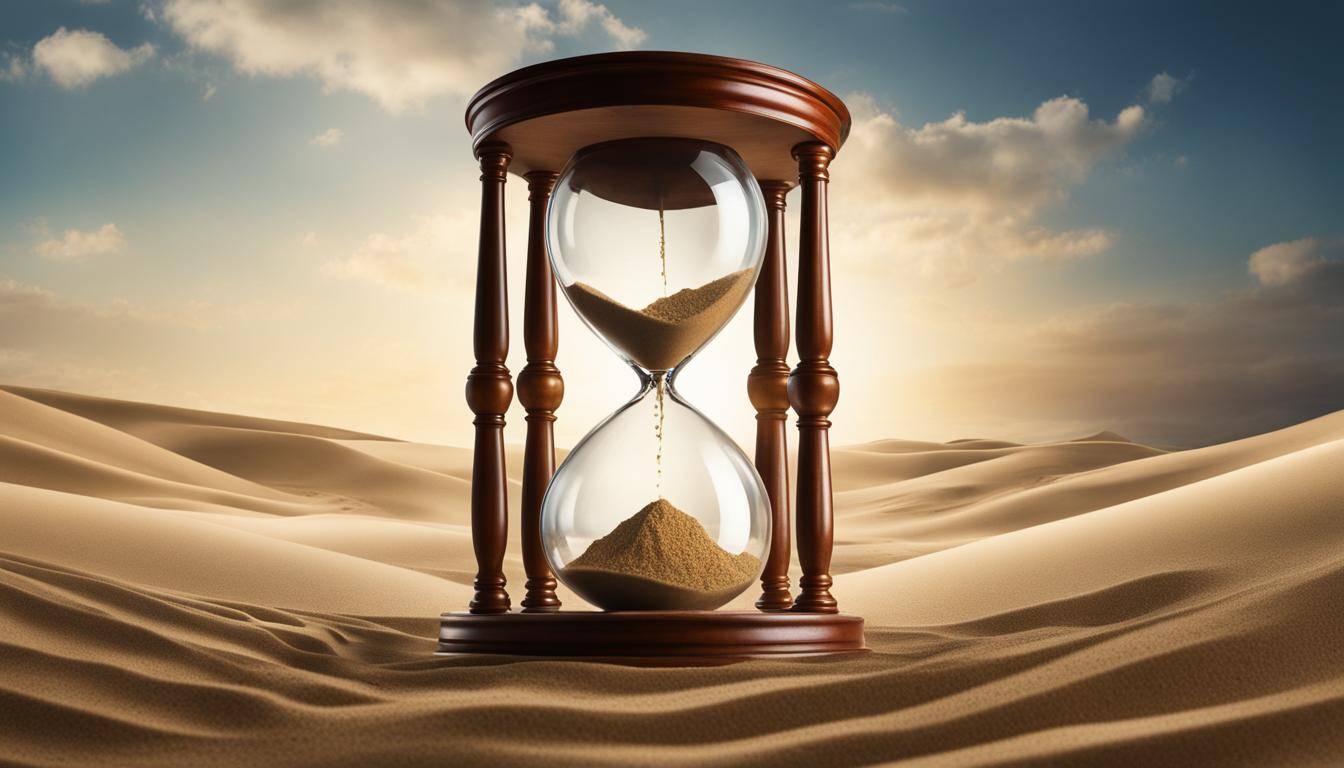Are you looking for ways to increase your productivity and efficiency? Incorporating psychological tricks into your daily routine can help you achieve your goals with ease. These scientifically-backed hacks have the power to supercharge your productivity and optimize your work performance.
By understanding and optimizing your psychological state, you can unlock your full potential and accomplish more in less time. From conditioning your work environment to planning your day beforehand, there are various strategies you can implement to boost your productivity.
So, are you ready to discover the secrets to unlocking your maximum productivity? Read on to explore the psychological tricks that can transform the way you work.
Key Takeaways:
- Condition your work environment to enhance productivity and creativity.
- Plan your day in advance to prioritize tasks and stay focused.
- Avoid multitasking and dedicate uninterrupted time to one task at a time.
- Engage in regular physical exercise to boost energy and mental output.
- Reward yourself after completing significant tasks to stay motivated.
Condition Your Work Environment for Productivity
Your work environment plays a pivotal role in your productivity. By optimizing various factors, you can create an environment that enhances focus, creativity, and overall work performance. Here are some tactics to condition your work environment for maximum productivity:
- Temperature: Maintaining the right temperature in your office can significantly impact your productivity. Studies have shown that a temperature between 70-77°F (21-25°C) promotes optimal cognitive function and reduces distractions. Ensure your office is at a comfortable temperature that allows you to work efficiently.
- Lighting: The type of lighting in your work environment can have a profound effect on your productivity. Natural light has been proven to improve alertness, focus, and overall well-being. If possible, position your workspace near a window to take advantage of natural lighting. Additionally, consider using light sources that mimic natural light indoors or using task lighting to minimize eye strain and maintain optimal visibility.
- Variation: Working from the same location day after day can lead to a stagnant mindset and decreased creativity. A change of environment can spark fresh ideas and rejuvenate your enthusiasm for work. Try working from different locations, such as a coffee shop, library, or outdoor space, to break monotony and stimulate productivity.
By incorporating these tactics and creating a conducive work environment, you can optimize your productivity and elevate your work performance.
Plan Your Day Beforehand
Planning your day in advance is key to maximizing your productivity. By taking the time to set clear goals, prioritize tasks, and visualize your schedule, you can ensure that you focus on what truly matters and make significant progress towards your objectives.
Research has consistently shown that planning ahead significantly improves task completion rates, allowing you to stay on track and achieve your desired outcomes.
When you plan your day ahead, you create a roadmap for success. Here are some effective strategies to incorporate into your planning process:
Set Clear Goals
Start by defining your objectives for the day. What do you want to accomplish? Be specific and actionable in your goal-setting to avoid ambiguity. Whether it’s completing a project, reaching a sales target, or learning a new skill, clarity will provide you with a sense of purpose.
Prioritize Tasks
Not all tasks carry the same weight in terms of impact and importance. Prioritize your tasks based on their significance and the desired outcomes. Focus on tasks that contribute directly to your long-term goals or have imminent deadlines.
By prioritizing effectively, you ensure that your energy and attention are directed towards the most crucial tasks.
Visualize Your Schedule
Use visual aids such as calendars or productivity apps to map out your day. Allocate specific time slots for each task or activity, keeping in mind the estimated duration and your energy levels throughout the day.
By visualizing your schedule, you can anticipate any potential conflicts or gaps, ensuring a smooth and efficient workflow.
Remember, planning your day is not just about creating a to-do list; it’s about strategically organizing your time and resources to increase productivity. By taking a proactive approach to planning, you empower yourself to make conscious choices and prioritize tasks that align with your goals.

Effective Strategies for Planning Your Day
| Strategies | Benefits |
|---|---|
| Set Clear Goals | – Provides clarity and focus – Enhances motivation and commitment |
| Prioritize Tasks | – Ensures important tasks are completed on time – Reduces stress and overwhelm |
| Visualize Your Schedule | – Optimizes time allocation – Helps identify potential scheduling conflicts |
Implementing these strategies will help you make the most of your time and achieve optimal productivity. With careful planning and prioritization, you can work efficiently towards your goals and experience a sense of accomplishment at the end of each day.
Focus on One Task at a Time
Do you find yourself juggling multiple tasks at once in an attempt to be more productive? While multitasking may seem like a smart strategy, it actually hampers efficiency. Our brains are not designed to focus on multiple tasks simultaneously, and constant task switching drains our mental energy. To truly maximize your productivity, it’s crucial to focus on one task at a time.
By dedicating uninterrupted time blocks to specific tasks, you give yourself the opportunity to fully immerse in the task at hand. This allows for deeper concentration, enhanced problem-solving, and improved creativity.
By directing your full attention to a single task, you can tap into your optimal cognitive abilities and perform at your best.
Minimizing distractions is equally important when aiming to focus on one task at a time. Distractions can come in many forms, such as notifications, emails, or background noise. Creating a distraction-free environment is key to maintaining your attention span and staying focused. Find a quiet space where you can minimize interruptions and fully engage with your work.
Remember, quality over quantity. Completing one task with excellence trumps half-hearted attempts at multiple tasks.
To visualize the impact of focusing on one task at a time, consider the following comparison:
| Multitasking | Single Task Focus |
|---|---|
| Constant task switching | Deeper concentration |
| Higher error rate | Enhanced problem-solving |
| Lower quality output | Improved creativity |
| Mental exhaustion | Optimal cognitive performance |
When you focus on one task at a time, you give yourself the space to fully dedicate your skills, knowledge, and creativity to the task at hand. This leads to higher quality results, increased efficiency, and a more rewarding and less stressful work experience.
Remember, multitasking doesn’t make you a superhero; it actually limits your potential. Embrace the power of single-task focus and watch your productivity soar.
Get Your Body Moving
Physical exercise is a powerful tool when it comes to increasing productivity. Engaging in regular exercise not only benefits your physical health but also has a positive impact on your mental well-being and cognitive skills.
When you exercise, your brain releases chemicals that uplift your mood and boost energy levels, resulting in heightened mental output.
Whether it’s going for a run, taking a yoga class, or simply going for a walk during your lunch break, incorporating physical activity into your daily routine can do wonders for your overall productivity.
Even low-intensity exercises can have a significant impact on your alertness and focus, sharpening your cognitive abilities and helping you stay engaged with your work tasks.
So, make it a point to prioritize exercise and physical activity in your schedule. Remember, a healthy body and mind go hand in hand with productivity.

Reward Yourself for Accomplishing Significant Tasks
Incorporating external rewards as positive reinforcement can be a game changer when it comes to boosting productivity. By implementing a system where you reward yourself after completing significant tasks, you tap into a powerful source of motivation to work more efficiently and effectively.
These rewards can provide the necessary drive to tackle even the most challenging tasks head-on.
The key to making rewards work for you is personalization. Choose rewards that have meaning to you and bring you joy. By aligning the rewards with your interests and desires, you create a powerful incentive that keeps you motivated and engaged.
Maybe it’s treating yourself to a cup of your favorite coffee, indulging in a relaxing self-care activity, or purchasing an item you’ve had your eye on. The important thing is that the reward resonates with you and gives you a sense of accomplishment and gratification.
Here’s a visualization exercise to help you get started:
Close your eyes for a moment and imagine completing a challenging task. Picture yourself putting in the effort, staying focused, and reaching the finish line. Now, imagine how it would feel to reward yourself for that accomplishment. Visualize the excitement, the satisfaction, and the sense of achievement. Let that feeling empower you and motivate you to take on your tasks with renewed energy and determination.
Recognize that Most of What You Do Doesn’t Matter
When it comes to productivity, one of the key factors to consider is task prioritization. It’s easy to get caught up in a whirlwind of activities, but the truth is, most of what you do doesn’t actually matter in the grand scheme of things.
By reflecting on your work habits and analyzing the tasks you engage in, you can identify unproductive activities and eliminate them from your schedule.
It’s common to find that a significant portion of our work time is spent on unnecessary or unplanned tasks that don’t contribute much to our overarching goals. These tasks are often disguised as busywork or distractions that divert our attention from what truly matters.
However, when you recognize that these tasks don’t have a significant impact on your productivity or progress, you can redirect your focus and energy towards the most important and meaningful tasks.
By streamlining your work and prioritizing tasks that align with your goals and values, you can optimize your productivity. This process involves evaluating each task’s value, impact, and urgency to determine its priority.
As you prioritize tasks based on their relevance and potential impact, you can ensure that you’re dedicating your time and effort to the activities that will yield the greatest results.
Task prioritization is a powerful productivity optimization strategy that allows you to make the most of your time and resources. By recognizing that most of what you do doesn’t matter and focusing on the tasks that do, you can achieve greater efficiency and effectiveness in your work.

Task Prioritization Techniques
| Technique | Description |
|---|---|
| The Eisenhower Matrix | A framework for categorizing tasks based on their urgency and importance. |
| ABC Analysis | A method of categorizing tasks into three groups: A for high priority, B for medium priority, and C for low priority. |
| The 80/20 Rule | An approach that suggests 80% of your results come from 20% of your efforts, helping you prioritize tasks with the greatest impact. |
| Time Blocking | A technique that involves scheduling specific time blocks for different tasks and activities to ensure focus and dedication. |
“Don’t be fooled by the illusion of busyness. Focus on the tasks that truly matter, and watch your productivity soar.”
Organize Your Thoughts
In order to maximize your productivity, it’s important to have mental organization and clarity. When your thoughts are scattered and chaotic, it can lead to increased stress levels and impulsive behavior, hindering your ability to focus and work efficiently.
To combat this, take the time to organize your thoughts through activities such as journaling, meditation, or planning. These practices can help clear your mind and provide the clarity needed to prioritize your tasks effectively.
Journaling is a powerful tool for mental organization. By writing down your thoughts, ideas, and goals, you can externalize them and reduce mental clutter.
This process allows you to gain a better understanding of your priorities and identify any areas that require attention or adjustment. Consider starting each day with a few minutes of journaling to set yourself up for success.
Meditation is another effective technique for organizing your thoughts and achieving mental clarity. Taking a few minutes each day to sit quietly and focus on your breath can help calm your mind and create a sense of mental order.
The practice of meditation allows you to observe your thoughts without judgment, helping you gain perspective and prioritize your tasks with greater clarity.
Additionally, planning can play a crucial role in mental organization. By creating a schedule or to-do list, you can systematically map out your tasks and allocate time for each one. This helps prevent overwhelm and ensures that you have a clear plan of action.
As you complete each task, you can check it off your list and experience a sense of accomplishment, motivating you to continue with your productive momentum.
Benefits of Mental Organization
When you take the time to organize your thoughts, you set yourself up for success by creating a solid foundation for productivity. Here are some benefits of mental organization:
- Improved focus and concentration
- Enhanced decision-making abilities
- Reduced stress and anxiety
- Increased productivity and efficiency
- Clearer priorities and goals
By investing time in mental organization, you can experience these benefits and create a work environment that fosters productivity and success. Remember, an organized mind leads to an organized and productive work environment.
Keep Time Intervals Short
Procrastination can be a major roadblock to productivity, especially when faced with overwhelming tasks or projects. The longer we put off starting, the harder it becomes to find the motivation to get things done.
However, there is a simple trick that can help you overcome procrastination and increase your motivation: breaking tasks down into shorter time intervals.
Instead of thinking about the entire task as a whole, commit to working on it for just a few minutes. Set a timer and focus solely on the task at hand during that short period. By doing this, you are creating a sense of urgency and eliminating the overwhelming feeling associated with long, daunting tasks.
Not only does this approach make the task more manageable, but it also helps you build momentum. Often, once you get started and overcome the initial inertia, it becomes easier to continue working and complete the task.
Breaking it down into smaller intervals makes the overall process less intimidating and gives you a sense of progress and accomplishment along the way.
“The secret of getting ahead is getting started.” – Mark Twain
Example:
| Task | Time Interval |
|---|---|
| Write a report | 5 minutes |
| Research for a project | 10 minutes |
| Clean your workspace | 15 minutes |
By allocating short time intervals to different tasks, you are more likely to overcome procrastination and maintain focus throughout your workday. Remember, even small steps can lead to significant progress. Celebrate each completed interval and keep pushing forward to achieve your goals.
Adapt Your Work Environment to Your Needs
Creating a conducive work environment is crucial for work environment optimization and productivity enhancement. Factors such as office temperature, lighting, and location can have a significant impact on your ability to focus and unleash your creativity.
By optimizing these elements, you can create an environment that maximizes your productivity effortlessly.
Maintaining a comfortable office temperature is essential for work environment optimization. Studies have shown that working in an environment with optimal temperature levels can improve cognitive performance, allowing you to concentrate better and accomplish tasks efficiently.
Ensure that your office temperature is set to a level that works best for you.
Take Advantage of Natural Lighting
Another way to optimize your work environment is by capitalizing on natural lighting. Natural light has been found to positively impact mood, productivity, and overall well-being.
Whenever possible, position your workspace near a window, allowing natural light to flood in and invigorate your workspace. If natural lighting is limited, consider using task lighting sources that mimic natural light to create an energizing and productive atmosphere.
Vary Your Work Locations
Do not confine yourself to a single workspace. While consistency can be beneficial, changing your work location occasionally can help stimulate creativity and prevent monotony.
Consider working in different areas of your office or even stepping outside to work in a nearby park or a coffee shop. This change of scenery can reignite your inspiration and provide a fresh perspective on your tasks.
| Work Environment Optimization Tips | Productivity Enhancement Techniques |
|---|---|
| Adjust the office temperature to a comfortable level | Utilize natural lighting to boost focus |
| Vary work locations to foster creativity | Customize your workspace to suit your needs |
| Minimize distractions and create a clutter-free environment | Invest in ergonomic furniture for enhanced comfort |
Conclusion
By incorporating these mindset tricks for productivity into your daily routine, you can unlock your full potential and achieve remarkable results. Optimizing your work environment, planning your day, and focusing on one task at a time are essential strategies for maximizing your efficiency.
Staying physically active and rewarding yourself for accomplishments provide the necessary motivation to push through challenges and maintain a high level of productivity. Remember to prioritize tasks based on their importance and eliminate unnecessary activities that drain your time and energy.
Lastly, keeping your thoughts organized and maintaining a clear conscience will help you stay focused and avoid distractions. By creating the ideal environment for increased productivity, you can unlock the secrets to achieving extraordinary success in both your personal and professional life.
FAQ
Can optimizing my work environment really boost my productivity?
Yes, studies have shown that factors like office temperature, lighting conditions, and varying work locations can significantly impact focus and creativity, leading to increased productivity.
How can planning my day in advance help improve productivity?
Planning your day allows you to set clear goals, prioritize tasks, and visualize your schedule. This helps you focus on important tasks and ensures progress towards your goals, resulting in improved productivity.
Is multitasking a productive strategy?
No, multitasking actually hampers efficiency. Our brains are not designed to focus on multiple tasks simultaneously, and constant task switching drains our mental energy. By dedicating uninterrupted time blocks to specific tasks and minimizing distractions, you can improve focus and accomplish more.
How does physical exercise affect productivity?
Regular physical exercise releases chemicals in the brain that boost mood and energy levels, leading to increased mental output. Even low-intensity exercise can improve alertness and focus, ultimately enhancing overall productivity.
Can using external rewards motivate me to be more productive?
Absolutely! By rewarding yourself after completing significant tasks, you provide positive reinforcement and motivation to work more efficiently. Personalized rewards that have meaning to you, such as treating yourself to a cup of coffee or purchasing a desired item, can be effective in boosting productivity.
How can I optimize my productivity by focusing on what matters?
Reflecting on your work habits can help you identify unproductive tasks and eliminate them from your schedule. By prioritizing the most important and meaningful tasks, you can streamline your work and increase productivity.
How does mental organization impact productivity?
Mental disorganization can lead to stress and impulsive behavior, negatively impacting productivity. By taking time to organize your thoughts through activities like journaling, meditation, or planning, you can clear your mind and gain clarity for prioritizing tasks.
How can I overcome procrastination and increase motivation?
Breaking down tasks into shorter time intervals can help overcome procrastination. By committing to working on a task for just a few minutes, you can often find the motivation to continue and complete the task.
Can adapting my work environment to my needs enhance productivity?
Yes, creating a conducive work environment is crucial for productivity. Optimizing factors like office temperature, lighting, and location can impact focus and creativity. Maintaining a comfortable temperature, using natural lighting, and changing work locations when needed can help enhance productivity.
How can I incorporate these psychological tricks into my routine for maximum productivity?
By optimizing your work environment, planning ahead, focusing on one task at a time, staying physically active, and rewarding yourself for accomplishments, you can create a mindset that maximizes your productivity.
Remember to prioritize tasks, stay organized, and maintain a clear conscience to create the ideal environment for increased productivity.




























































